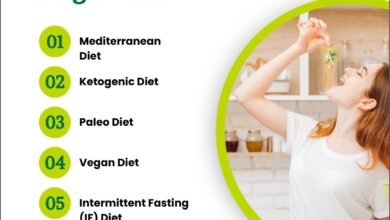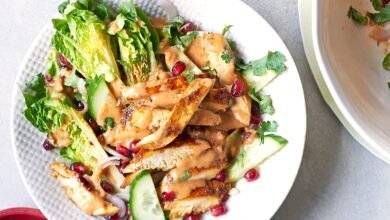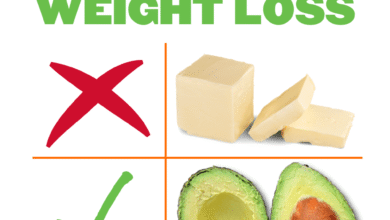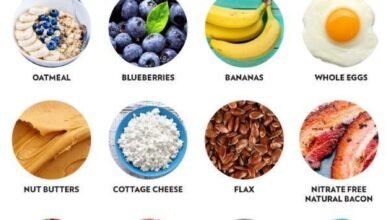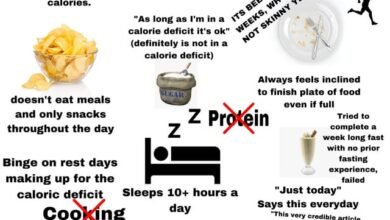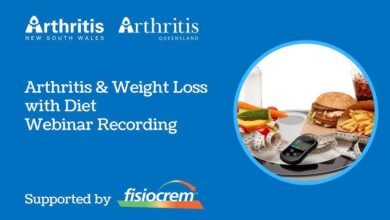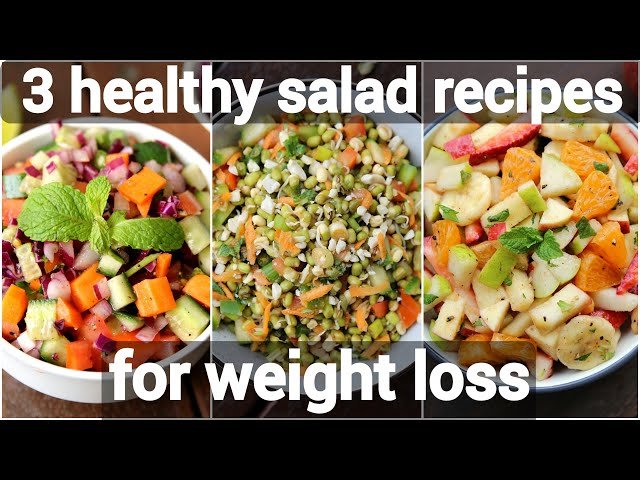
How to Make Healthy Food at Home for Weight Loss: Simple Tips
Are you ready to take control of your weight loss journey right from the comfort of your own kitchen? Imagine savoring delicious meals that not only taste amazing but also help you shed those extra pounds.
Cooking healthy food at home can be both simple and rewarding, and it’s the key to achieving your weight loss goals. In this guide, you’ll discover easy-to-follow tips and tricks that make healthy cooking a breeze. By the end, you’ll feel empowered to whip up nutritious dishes that support your health and keep your taste buds happy.
Let’s dive into the secrets of making healthy food at home for weight loss, and unlock a new chapter of your life filled with energy and vitality.
Benefits Of Home Cooking
Cooking at home provides numerous benefits, especially for weight loss. Preparing meals in your kitchen allows you to control ingredients. You can ensure your meals are both nutritious and lower in calories. Home cooking encourages healthier choices and mindful eating. It also helps you avoid unnecessary additives and preservatives.
Control Over Ingredients
Home cooking gives you full control over what goes into your meals. You can choose fresh vegetables, lean proteins, and whole grains. This control allows you to limit unhealthy fats, sugars, and salt. Healthier meals lead to better weight management.
Portion Control
Preparing food at home helps manage portion sizes. Restaurant servings are often larger and contain hidden calories. By cooking at home, you can serve yourself just the right amount. This practice reduces overeating and supports weight loss goals.
Cost-effective
Cooking at home is usually cheaper than dining out. Buying ingredients in bulk saves money over time. You can plan meals to use up leftovers, reducing waste. A healthier wallet and diet both contribute to overall well-being.
Building Healthy Habits
Cooking at home promotes long-lasting healthy habits. You learn to choose better ingredients and cook nutritious meals. These habits eventually become part of your lifestyle. A consistent approach to healthy eating supports weight loss success.
Enhanced Food Safety
Cooking at home ensures better food safety practices. You can wash produce thoroughly and store foods properly. This practice reduces the risk of foodborne illnesses. Safe cooking practices contribute to a healthier you.
Essential Kitchen Tools
Creating healthy meals at home can be simple and enjoyable. Equipping your kitchen with essential tools makes cooking easier. These tools help achieve your weight loss goals by ensuring meals are nutritious and delicious. Let’s explore the must-have kitchen tools that enhance your cooking experience.
Cutting Boards
Cutting boards are vital for meal prep. They provide a clean surface for chopping vegetables and fruits. Choose durable boards that are easy to clean. A good cutting board ensures safe and efficient slicing.
Sharp Knives
Sharp knives make cutting easier. They save time and effort. Invest in quality knives for precise chopping. Properly cut ingredients cook better, enhancing flavor and texture.
Measuring Cups And Spoons
Measuring cups and spoons ensure accurate ingredient portions. Precision is key for healthy recipes. They help you control calorie intake. Consistent measurements lead to consistent results.
Non-stick Pan
A non-stick pan is great for cooking with less oil. It helps in preparing low-fat meals. Foods cook evenly without sticking. This tool aids in healthy cooking.
Blender
A blender is perfect for smoothies and soups. It creates nutritious drinks quickly. Blending fruits and vegetables helps retain nutrients. A versatile tool for weight loss recipes.
Food Scale
A food scale ensures portion control. It helps weigh ingredients accurately. Knowing serving sizes aids in managing calorie intake. Essential for balanced meals.
Steamer Basket
Steamer baskets cook vegetables without oil. They preserve nutrients and flavor. Steaming is a healthy cooking method. Perfect for preparing light meals.
Storage Containers
Good storage containers keep leftovers fresh. They allow for meal prepping. Organize your food for easy access. Helps maintain a healthy eating plan.
Choosing Nutritious Ingredients
Choosing nutritious ingredients is the first step towards creating healthy meals at home that support weight loss. It’s not just about eating less; it’s about eating right. Imagine transforming your kitchen into a hub of health where each ingredient serves a purpose in your journey to a healthier you. Let’s dive into how you can select the best foods to fuel your body.
Whole Grains
Whole grains are your best friend when it comes to weight loss. Unlike refined grains, they retain all parts of the grain, providing more fiber and nutrients. Think brown rice, quinoa, and oats. These grains keep you full longer, helping you resist the urge to snack unnecessarily.
Switching to whole grains can be as simple as choosing whole-grain bread over white bread. Try different types of grains in your meals; each has its unique taste and texture. You might discover a new favorite that makes healthy eating enjoyable.
Fresh Produce
Fresh fruits and vegetables are the cornerstone of any healthy eating plan. They are packed with vitamins, minerals, and fiber while being low in calories. Aim to fill half your plate with colorful produce. This not only boosts your nutrition but also adds variety to your meals.
Visit your local farmer’s market for the freshest options. Seasonal produce often offers more flavor and nutrients. Have you tried making a salad with kale and strawberries? It’s a delightful mix that surprises your taste buds while supporting your health goals.
Lean Proteins
Lean proteins are essential for weight loss as they help build and repair tissues without adding excess fat. Opt for chicken breast, tofu, or fish like salmon and tuna. These proteins are versatile, allowing you to create a variety of dishes that fit your taste.
Grilling or baking is a great way to prepare them. Avoid frying to keep your meals healthy. Have you ever tried marinating your chicken with lemon and herbs? It’s a simple trick that adds flavor without extra calories.
Are you ready to transform your meals with nutritious ingredients? Embrace the change, and see how it positively impacts your health journey. What’s the first ingredient you’ll swap to create a healthier meal today?
:max_bytes(150000):strip_icc()/6149755-187f72cd473c4c068dfb03f68413de93.jpg)
Credit: www.eatingwell.com
Meal Planning Strategies
Effective meal planning can be a powerful tool for weight loss. It helps you stay organized and focused on your goals. With the right strategies, you can enjoy healthy meals and control portions. The following sections provide simple tips and ideas to get you started.
Weekly Menu Ideas
Create a weekly menu to save time and reduce stress. Plan meals that include a balance of proteins, vegetables, and whole grains. Consider dishes like grilled chicken with roasted vegetables or quinoa salad with chickpeas. Use a calendar to outline breakfast, lunch, and dinner options. This approach helps you avoid impulsive food choices and stay on track.
Portion Control Tips
Portion control is crucial for maintaining a healthy weight. Use smaller plates to help manage portion sizes. Fill half your plate with vegetables, a quarter with protein, and a quarter with grains. Be mindful of serving sizes, especially with high-calorie foods. Measuring cups and spoons can help ensure accurate portions.
Simple Cooking Techniques
Healthy cooking does not have to be complicated. Simple techniques can transform meals into nutritious delights. These methods preserve flavor and nutrients, making weight loss easier and tastier. Discover how steaming and grilling elevate your dishes while using spices and herbs enhances their taste.
Steaming And Grilling
Steaming is a gentle cooking method. It locks in nutrients and flavors. Vegetables retain their color and crunch. Fish stays moist and delicate. Steaming is perfect for those who prefer light meals. It requires minimal oil, making dishes lower in calories.
Grilling adds a smoky taste to foods. It is excellent for proteins and vegetables. The high heat seals in flavors. Grilled dishes require little fat or oil. The charred edges are delicious and healthy. Try grilling chicken, fish, or bell peppers for a tasty meal.
Using Spices And Herbs
Spices and herbs add depth to dishes. They enhance flavor without extra calories. Basil, thyme, and rosemary bring freshness to meals. Cumin and paprika offer warmth and spice. A sprinkle of cinnamon can sweeten without sugar.
Experiment with different combinations. Discover your favorite flavors. Herbs and spices can reduce the need for salt. This helps in maintaining a healthy diet. They offer antioxidants and have health benefits. Transform plain dishes into savory delights with these natural seasonings.

Credit: www.pinterest.com
Healthy Snack Options
Choosing healthy snacks can make a big difference in weight loss. Snacks should be nutritious and satisfying. They should help keep hunger at bay without adding too many calories. Homemade snacks often offer more control over ingredients and portions. Let’s explore some tasty and healthy snack ideas.
Homemade Smoothies
Smoothies are a great snack for weight loss. They are quick to make and delicious. Use fresh fruits like bananas and berries. Add some spinach for extra nutrients. Blend with low-fat yogurt or almond milk. Avoid adding sugar. A little honey or agave can sweeten naturally. Choose a mix of fruits and veggies. This keeps the smoothie balanced and healthy.
Nutritious Energy Bars
Energy bars can be a perfect snack on the go. Making them at home ensures they are healthy and tasty. Use oats as a base. They are full of fiber and keep you full. Add nuts and seeds for healthy fats. Dried fruits add natural sweetness. Press the mixture into a baking dish. Chill until firm, then cut into bars. Store in the fridge for easy access. Enjoy a bar when craving a quick snack.
Mindful Eating Practices
Create healthy meals at home by focusing on fresh ingredients and balanced portions. Choose whole grains, lean proteins, and colorful vegetables to support weight loss. Practice mindful eating by savoring each bite and listening to your body’s hunger signals.
Creating healthy food at home for weight loss is more than just choosing the right ingredients. It’s about embracing mindful eating practices. By paying attention to how you eat, you can enhance your relationship with food, helping you make better choices and achieve your weight loss goals.Eating Slowly
Eating slowly is an effective way to practice mindful eating. It allows you to savor each bite and enjoy the flavors. This not only makes meals more satisfying but also gives your brain time to recognize fullness. Try putting your fork down between bites. Chew thoroughly and focus on the texture and taste of your food. This simple habit can prevent overeating and help you enjoy your meals more. Eating slowly can also reduce stress. When you rush through meals, it’s easy to feel anxious and unsettled. Slowing down your eating pace can create a calming ritual in your day.Recognizing Hunger Cues
Listening to your body is essential in mindful eating. Learn to distinguish between true hunger and eating out of boredom or emotion. Before reaching for a snack, pause and ask yourself, “Am I really hungry?” Keep a hunger scale in mind, from 1 (starving) to 10 (stuffed). Aim to eat when you’re around a 3 or 4, and stop when you’re at 6 or 7. This method helps you to eat according to your body’s needs rather than external cues. Reflect on your eating patterns. You might discover that you often eat when you’re stressed or tired. By recognizing these patterns, you can begin to make more conscious choices, aligning your eating habits with your health goals. Mindful eating is a journey, not a destination. What will you discover about your relationship with food?
Credit: uk.pinterest.com
Frequently Asked Questions
What Is The Healthiest Meal You Can Make For Weight Loss?
Grilled chicken with steamed vegetables and quinoa is a healthy meal for weight loss. It provides lean protein, fiber, and essential nutrients. Add a salad with mixed greens, cherry tomatoes, and a lemon vinaigrette for extra flavor. This balanced meal supports weight loss by keeping you full longer.
What Is The Healthiest Food To Eat When Trying To Lose Weight?
Opt for whole foods like vegetables, lean proteins, and whole grains. These foods boost metabolism and keep you full. Include fruits, nuts, and seeds for added nutrition. Drink plenty of water to stay hydrated and curb hunger. Prioritize balanced meals to support weight loss and overall health.
What Is The 3-3-3 Rule For Weight Loss?
The 3-3-3 rule involves eating three balanced meals, engaging in three workouts per week, and setting three achievable goals. This strategy focuses on maintaining consistency and balance for effective weight loss. It emphasizes portion control, regular exercise, and realistic objectives to support sustainable weight management.
How Can I Lose Weight In 7 Days Naturally?
Eat balanced meals with lean proteins, fruits, and vegetables. Drink plenty of water to stay hydrated. Exercise daily with activities like walking or jogging. Avoid processed foods, sugary drinks, and excessive snacking. Get adequate sleep to support metabolism and recovery.
Conclusion
Creating healthy meals at home supports weight loss goals effectively. Cook with fresh ingredients. Limit processed foods. Focus on balanced meals. Include vegetables, lean proteins, and whole grains. Experiment with spices for flavor. Control portion sizes. Drink plenty of water.
Meal prep can save time. Enjoy cooking with family or friends. It makes the journey enjoyable. Stay consistent and patient. Results come with time and effort. Healthy eating leads to a better lifestyle. Feel more energized and motivated. Start your healthy cooking adventure today.
Your body and mind will thank you!

